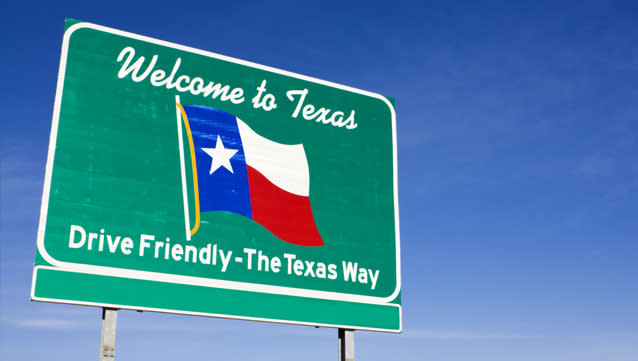Which Cities Americans Are Moving to – and Escaping From

For much of the nation’s history, Americans moved around mostly to find decent work. But these days, people may be more inclined to move in search of low taxes, cheap housing and like-minded citizens they’re comfortable being around. Such shifts in internal migration patterns could transform the U.S. economy and the political establishment in sweeping and unforeseen ways.
That’s the contention in Shaping Our Nation, the latest book from political historian Michael Barone of the American Enterprise Institute and the Washington Examiner, who also-co-authors the biennial Almanac of American Politics. In Shaping Our Nation, Barone surveys the movement of people both to and within America, going back to colonial days. By analyzing long-term trends, he helps explain what’s going on in America today far more thoroughly than pundits scanning only the latest poll ratings or batch of economic figures.
Related: Inside Luxury Tiny Homes: Millennials, Retirees Bucking Mortgages and McMansions
From 1970 to 2010, for instance, there was a “mass internal migration” of Americans from northern industrial cities to newer, more welcoming Sun Belt locales. This north-to-south migration is typically attributed to shifting job trends (and better weather), but Barone points out that two of the states to gain the most population during that time—Texas and Florida—also lured people because there is no state income tax.
California, meanwhile, enjoyed a huge influx of people from 1930 until 1990, but has since begun to lose people and businesses fleeing high taxes, regulatory overkill and everyday hassles such as congestion. Many of those people have moved to lower-tax mountain states such as Utah, Colorado and Idaho, while most of the newcomers to California during the last two decades have been Latino immigrants.
Related: How the Job Market is Killing Housing
Another underreported trend Barone mentions in the video above is the movement of Americans to “culturally convivial” places where they feel they fit in. Just as young hipsters might move to Brooklyn or student activists might hitchhike to Berkeley, older conservative Americans might move to “well-churched” cities in Texas, where the population has grown 53% since 1990—twice the national rate.
“Texas has been a huge growth magnet over the last 20 years,” Barone says, “and not because it has pleasant weather.”
Related: Good News For Millennials: A Big Company Might Actually Hire You
That may be the new way Americans define an enduring urge: “to pursue dreams and escape nightmares,” as Barone puts it. The nightmare cities, he says, are mostly familiar ones: Detroit, Cleveland, Buffalo, and other former factory towns that no longer have enough jobs to support a shrinking population. The new dream cities, where low taxes, low housing costs and a clear cultural identity are fostering economic and population growth: Houston, Dallas-Ft. Worth, Nashville, Atlanta and several “mini Atlantas” including Charlotte, Raleigh-Durham and Jacksonville.
Related: Why Millennials Will Never Be Happy
Cities and states that gain population always enjoy greater political power, of course, as their representation in Washington increases. And economic momentum can be self-perpetuating, since more companies are likely to relocate to a particular region once other businesses have gotten the ball rolling. So there may continue to be a national power shift that favors the south, at the expense of the trendy right and left coasts and unionized cities of the upper Midwest.
Some of the high-tax, high-cost cities can fight back, of course, by lowering taxes and doing more to create a business-friendly environment that lures employers. They may even develop an advantage as their economies stagnate and wage rates fall, lowering labor costs for companies that might resettle there. Still, many nightmare cities remain saddled with pension costs for former employees and other liabilities that aren’t easy to escape. No wonder people move.
Rick Newman’s latest book is Rebounders: How Winners Pivot From Setback To Success. Follow him on Twitter: @rickjnewman.

